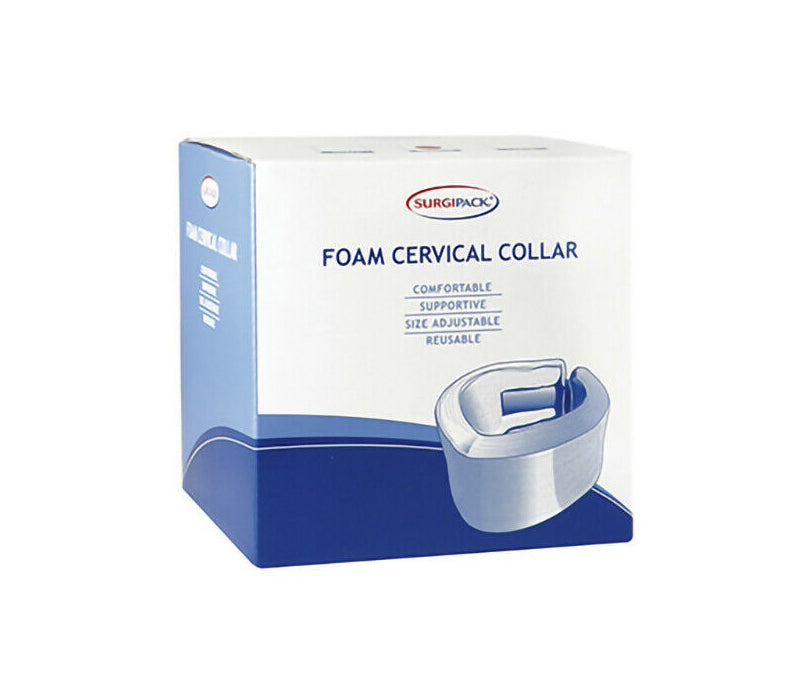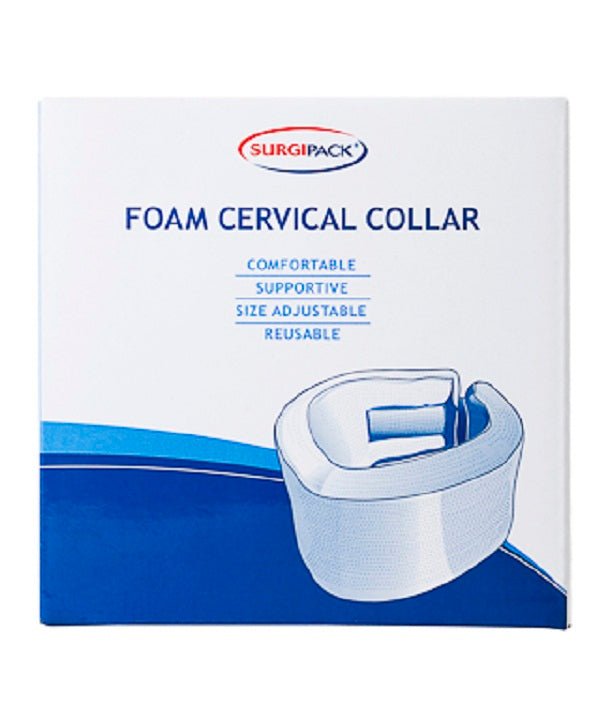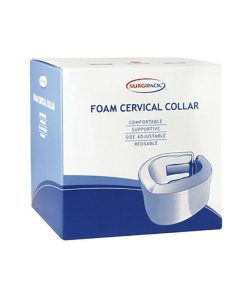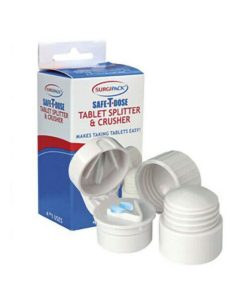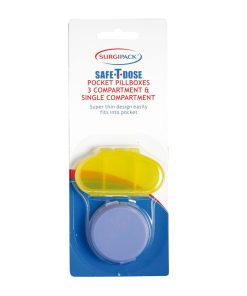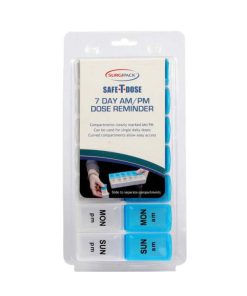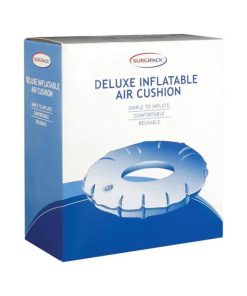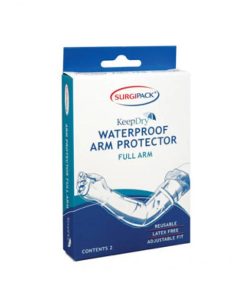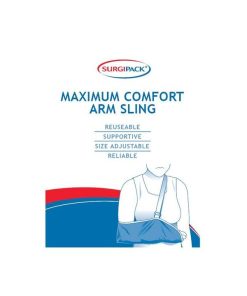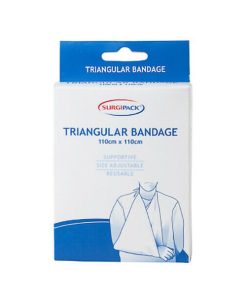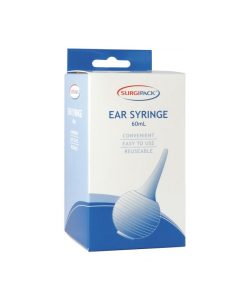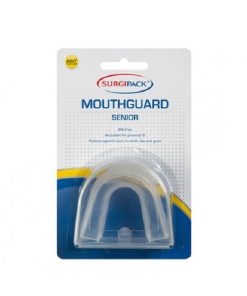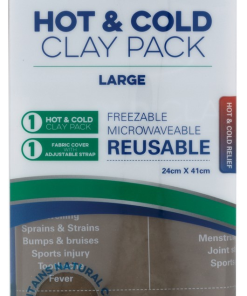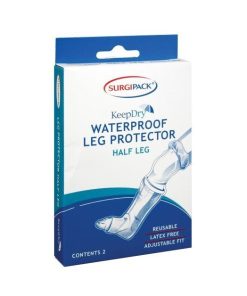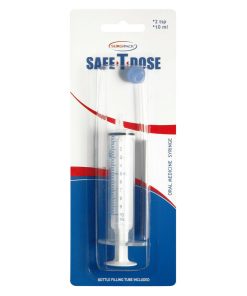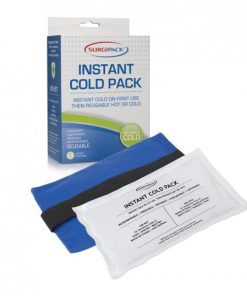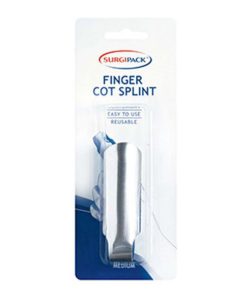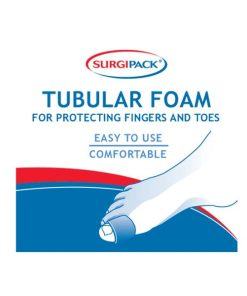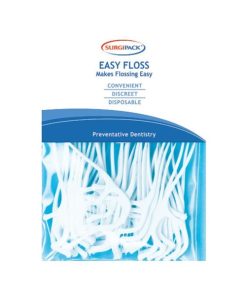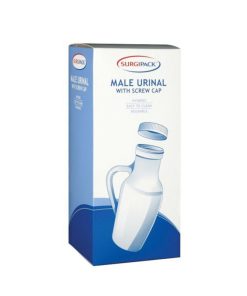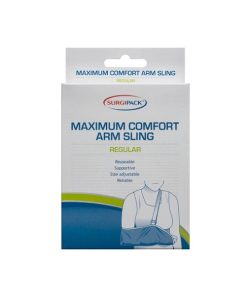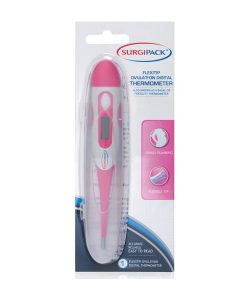Surgipack Collar Cervical Foam Large Surgipack
$ 19,95 $ 11,97
Surgipack Collar Cervical Foam is designed to provide a comfortable support to the neck by immobilizing movement. Consultation with a healthcare practitioner should be sought before applying this product.
Ideal for people who suffer from chronic neck pain. It can also be used by people who have strained their neck muscles. It helps minimize neck movement and is reusable.
FEATURES & BENEFITS
- Helps limit neck movement
- Gives mild support to stiff necks
- Can be used for chronic neck pain
- Comfortable and Supportive
- Size adjustable and Reusable
Cervical collars, also known as neck braces or C collars, are used to support your spinal cord and head. These collars are a common treatment option for neck injuries, neck surgeries, and some instances of neck pain.
There are different types of cervical collars. Which one you need will depend on your type of neck injury or the underlying cause of your neck pain.
Some conditions that may require the use of a cervical collar include the following:
- Whiplash and trauma. If you’ve been in a car accident or sustained some other kind of injury, like a fall, a cervical collar may protect your neck and prevent further injury.
- Neck surgery. A cervical collar helps to prevent injury after surgery by limiting rotation, as well as side-to-side and back and forth movements.
- Nerve compression. Cervical collars are occasionally used to reduce pressure on the nerves in the neck.
- Cervical spondylosis. A cervical collar may cause temporary relief from pain caused by cervical spondylosis — an age-related condition that’s caused by wear and tear of cartilage and bones in the neck.
- General neck pain or stiffness. A cervical collar may help to take some strain off your neck muscles.
Tips for wearing a cervical collar
If you need to wear a cervical collar, your healthcare provider will likely give you specific instructions about what you should and shouldn’t do while wearing it.
In general, when wearing a cervical collar, it’s best to:
- Move instead of resting or sitting too much. Gentle movement, like walking, can help prevent your neck muscles from stiffening up. Stiff muscles may prolong your recovery.
- Focus on good posture. Try not to slouch or hunch over. Keep your back straight, shoulders back, head straight with your ears positioned over your shoulders.
- Avoid sitting in soft, low chairs. This can affect your posture and put extra pressure on your neck.
- Avoid lifting or carrying anything heavy. Also avoid strenuous activity, like running, or other high-impact movement.
- Leave your collar on at all times, except when cleaning it or as directed by your healthcare provider.
- Make sure your collar fits tightly, but is comfortable. If the collar doesn’t fit tightly enough, it likely won’t provide the support you need, which could cause further pain or injury. If it’s too loose, it could rub against your skin and cause irritation or blisters.
SPECIFICATION
- Small: 520mm long, 76mm high (at front)
- Medium: 520mm long, 90mm high (at front)
- Large: 520mm long, 100mm high (at front)
WARNING
Always read the label. Use only as directed.
FAQ
How to sleep with a cervical collar
Here are a few tips for sleeping with a cervical collar:
- Make sure your mattress offers good support. A mattress that’s too soft may not give your neck the support you need.
- Try to keep your neck in a neutral position, not bent forward, backward, or to the side.
- Don’t sleep in a twisted position. Try to keep your neck aligned with your body.
- Try sleeping on your back with a thin pillow. Using extra pillows can put extra pressure on your neck.
- To get out of bed, first roll gently onto your side. Then, swing your legs over the side of the bed and push up with your arms.
How to bathe with a cervical collar
It’s usually easier to take a bath rather than a shower when wearing a cervical collar.
You can bathe as you normally would, but it’s important to keep the cervical collar dry and out of the water. Placing plastic wrap around the collar may help to keep it dry.
If you do take a shower, you may find using a handheld shower nozzle will help to minimize neck bending and movement.
How to clean a cervical collar
It’s important to wash your collar daily to prevent bacteria growth. Not cleaning your collar frequently can lead to skin irritation if bacteria is allowed to grow.
You can wash most soft collars in a sink with warm water and gentle soap, and then lay the collar out to dry. Don’t use harsh soaps, detergents, or bleach. These may cause a skin reaction.
You can clean hard collars by replacing dirty pads and rinsing the front and back panels.
When you put your cervical collar back on, it’s important that it fits properly. If the collar isn’t tight enough, it can cause your skin to rub, which could lead to pressure sores and irritation.
How long do you need to wear a cervical collar?
The length of time that you’ll need to wear a cervical collar depends on your specific condition.
For moderate neck pain that’s not caused by a sudden injury, it’s often recommended that you don’t wear a cervical collar for more than a week. Extended use of a collar can cause your neck muscles to stiffen and weaken.
If you’re wearing a cervical collar for serious neck pain or a sudden injury, talk with your doctor about how long you need to wear it.
Quick Shipping and Professional Packaging
We provide a variety of shipping options due to our long-running partnerships with UPS, FedEx and DHL. Our warehouse staff will package all goods to our exacting requirements. Your goods are thoroughly checked and secured properly prior to shipping. We ship to thousands clients each day across multiple countries. This shows that we're committed to being the largest online retailer in the world. Both Europe and the USA have distribution and warehouse centres.
Note: Orders that include more than one item will be assigned a processing date depending on the item.
Prior to shipment, we will inspect thoroughly the items you've purchased. The majority of orders are shipped within 48 hours. The expected delivery time will be between 3-7 days.
Returns
We don't control the inventory in our factory and warehouse. This means that the actual stock could change at any time. Be aware that your order may be out of stock when the order has been placed.
Our policy is valid for 30 days. If you have passed 30 days in the past since you purchased and we are unable to offer you a refund or exchange.
The item cannot be used and in its original condition. It must also still be in the original package.
Related products
Tablet Splitter & Crusher
Surgipack 6053 Safe T-Dose Tablet Splitter & Crusher Surgipack
Medical Equipment
Ovulation Thermometer
Braces & Sleeves
Cast & Bandage Protectors
Surgipack 6174 Keep Dry Waterproof Full Leg Protector Contents 2 Surgipack
Plastic Eye Bath Dispenser
Medical Tape & Bandages
Ear Syringe
Dental Mouthguards
Hot & Cold Therapies
Surgipack Hot or Cold Clay Pack + Fabric Cover – 24cm x 41cm Large Surgipack
Sport Mouthguards Junior
Emergency Blankets
Mobility & Accessibility
Surgipack Keep Dry Waterproof 2 Half Leg Protector Surgipack
Medical Syringes
Surgipack 6480 Safe-T-Dose Oral Medicinal Syringe Medium Surgipack
Hot or Cold Pack
Surgipack Instant Reuseable Hot or Cold 15cm x 25cm Pack Surgipack
Finger Cot Splint
Tubular Foam
Dental Floss & Flossers
Finger Cot Splint
Incontinence Aids
Mobility & Accessibility
Ovulation Thermometer
Mobility & Accessibility
